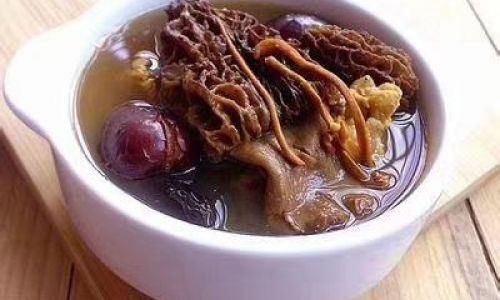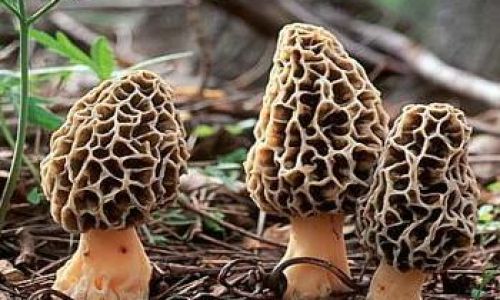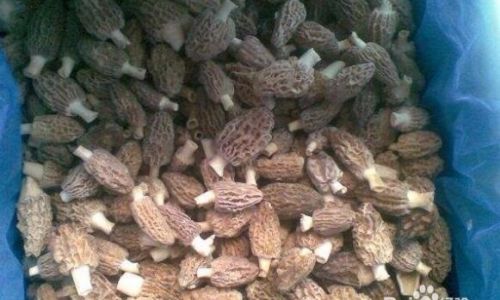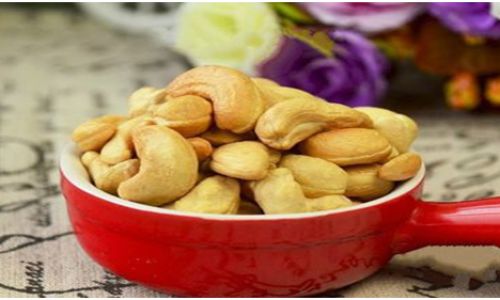Introduction
In the realm of culinary delights, morels, with their distinctive earthy aroma and rich flavor, occupy a prestigious position. These elusive fungi, often found in forests after spring rains, are highly valued for their unique taste and nutritional benefits. However, their seasonal availability and perishable nature pose challenges for food enthusiasts who wish to enjoy them year-round. One common question that arises among gourmets and home cooks alike is: can morels be frozen for preservation? This article delves into the intricacies of freezing morels, exploring the process, potential pitfalls, and best practices to ensure that these precious mushrooms retain their quality and flavor when stored for later use.
Understanding Morels
Before discussing preservation methods, it’s crucial to understand the basics of morels. Morchella esculenta, commonly known as the yellow morel or common morel, and other species within the Morchella genus, are prized for their complex flavor profiles that can enhance dishes from simple pasta to elaborate gourmet creations. Morels have a honeycomb-like cap and a hollow stem, which distinguishes them from other mushrooms. Their fleshy texture and ability to absorb flavors make them a favorite among chefs.

Morels are also known for their nutritional profile, rich in vitamins, minerals, antioxidants, and dietary fiber. They are low in calories but high in umami-producing compounds, contributing to their sought-after taste. However, their delicate nature means they spoil quickly if not handled properly, necessitating careful storage solutions.
The Science Behind Freezing
Freezing is a popular method of food preservation that involves lowering the temperature of food to a point where water in the food forms ice crystals, thereby inhibiting the growth of microorganisms that cause spoilage. This process slows down biochemical reactions and enzyme activity, effectively extending the shelf life of perishable goods like morels.
When morels are frozen, the water within their cells transforms into ice crystals. The size and distribution of these crystals are crucial factors determining the quality of the mushrooms after thawing. Smaller, more evenly distributed crystals cause less damage to cell structures, preserving the texture and flavor better than larger crystals. Therefore, the freezing method and speed play vital roles in maintaining the quality of frozen morels.

Preparing Morels for Freezing
-
Cleaning: The first step in preparing morels for freezing is cleaning. Since morels grow in the wild, they may contain dirt, debris, or even insects. Gently brush off any visible dirt using a soft brush or a damp paper towel. Avoid soaking morels in water, as this can cause them to absorb too much liquid, which can affect their texture when frozen and thawed.
-
Trimming: Cut off the stem end of the morel where it attaches to the ground, as this part can be tough and bitter. If the stems are tender, they can be retained and used.
-
Blanching: Blanching is a crucial step in preparing morels for freezing. It involves immersing the mushrooms in boiling water for a short period (usually 2-3 minutes), then plunging them into ice water to stop the cooking process. Blanching helps to destroy enzymes that could cause deterioration, brightens the color, and helps to retain the mushrooms’ shape and texture during freezing.

-
Drying: After blanching, pat the morels dry using a clean kitchen towel or paper towels. Excess moisture can lead to freezer burn and ice crystal formation, which can degrade the quality of the mushrooms.
-
Packaging: Use airtight, freezer-safe containers or heavy-duty freezer bags to store the morels. Label the containers with the date and contents for easy identification. Removing as much air as possible from the packaging helps to prevent freezer burn.
Freezing Techniques
There are two primary techniques for freezing morels:

-
Quick-Freezing (Flash Freezing): This method involves using a home freezer set to its lowest temperature or a commercial quick-freezer. Spread the prepared morels in a single layer on a baking sheet and place it in the freezer until the mushrooms are solidly frozen. Once frozen, transfer them to freezer bags or containers to minimize air exposure. Quick-freezing helps to form smaller ice crystals, preserving the texture better.
-
Traditional Freezing: If quick-freezing equipment is not available, traditional freezing can still be effective. Simply package the prepared morels in freezer-safe containers or bags, ensuring they are not overcrowded to allow for even freezing. Place the containers in the freezer and allow them to freeze completely.
Storing and Using Frozen Morels
Frozen morels should be stored in the coldest part of the freezer, ideally at 0°F (-18°C) or below. Properly frozen and stored, morels can retain their quality for up to a year. When ready to use, thaw the morels in the refrigerator overnight or under cold running water. Avoid thawing them at room temperature or using the microwave, as this can lead to uneven heating and texture loss.

Once thawed, morels can be used in various dishes, from soups and stews to sautés and gratins. Their rich flavor and texture will be largely preserved, allowing you to enjoy the taste of freshly picked morels even during off-seasons.
Conclusion
In summary, freezing is an effective method for preserving morels, allowing you to savor their unique flavor and nutritional benefits throughout the year. By following the steps outlined above—cleaning, trimming, blanching, drying, and packaging properly—you can ensure that your frozen morels retain their quality, texture, and flavor. Whether you opt for quick-freezing or traditional freezing, the key is to minimize ice crystal formation and air exposure to preserve the mushrooms’ integrity. With careful handling and storage, frozen morels can become a valuable addition to your culinary repertoire, offering endless possibilities for delicious and nutritious meals.





0 comments